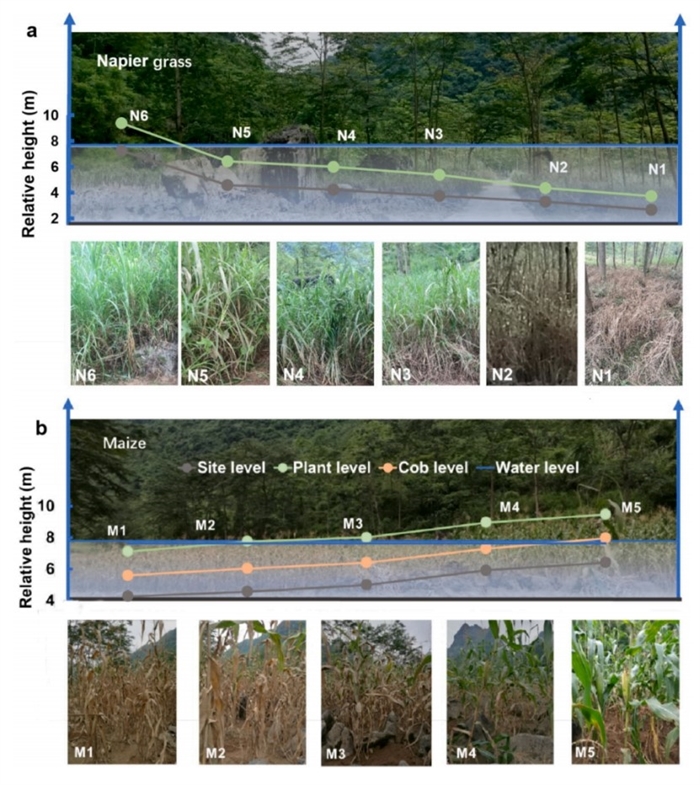Progress in Flood Risk Management for Southwest China's Karst Agriculture Ecosystems
A Researcher team led by Dr. Xu Xianli, from the Institute of Subtropical Agriculture, Chinese Academy of Sciences, have made significant progress in understanding how agricultural ecosystems in the karst depressions of Southwest China respond to flood risks.
The Southwest Karst Region, one of the largest contiguous karst areas globally, is known for its unique hydrogeological conditions. The risk of flooding in karst depressions escalates significantly during large-scale heavy rainfall events. The impact of global warming is exacerbating the risk of extreme rainfall events in this region, posing a threat to agroecosystems.
In their recent findings published in Journal of Hydrology, an extreme rainfall event in the Guzhou Depression in 2016 were investigated to analyze the impact of flooding on the agro-ecosystems, focusing on Maize and Napier grass. The study found that the extreme rainfall event, a once-in-a-decade occurrence, led to the loss of 78.6% of Maize planting area and the death of 20.4% of Napier grass planting area in the depression. Napier grass outperformed Maize during inundation due to its higher fine root biomass and stable leaf photosynthetic capacity. The critical inundation tolerance time for Napier grass was determined to be 10.2 days, while maize plants could survive when protruding 1.5 meters above the water surface. For this extreme rainfall event, the safe planting heights for Napier grass and Maize, relative to the lowest point of the depression elevation, were 3.09 meters and 6.21 meters, respectively. The study suggests that the layout of karst depression agroecosystems should be rationalized based on the plants' flood resistance to cope with future climate change.
The research introduces a framework for determining safe planting heights for plants by exploring the relationship between plant survival and flooding processes. It also highlights that flooding processes may vary across different regions and landscapes, and different plants have varying flood tolerances. Therefore, to generalize this framework to other areas, experimental calibration and validation based on local hydrological environments and plant species are necessary.
Contact:Xianli Xu
E-mail: xuxianliww@gmail.com

The impact of flooding on plants in the Guzhou depression. (Image by Zhenwei Li)

Survival zones for Napier grass (a) and Maize (b) when submerged. (Image by Zhenwei Li)
Download attachments: